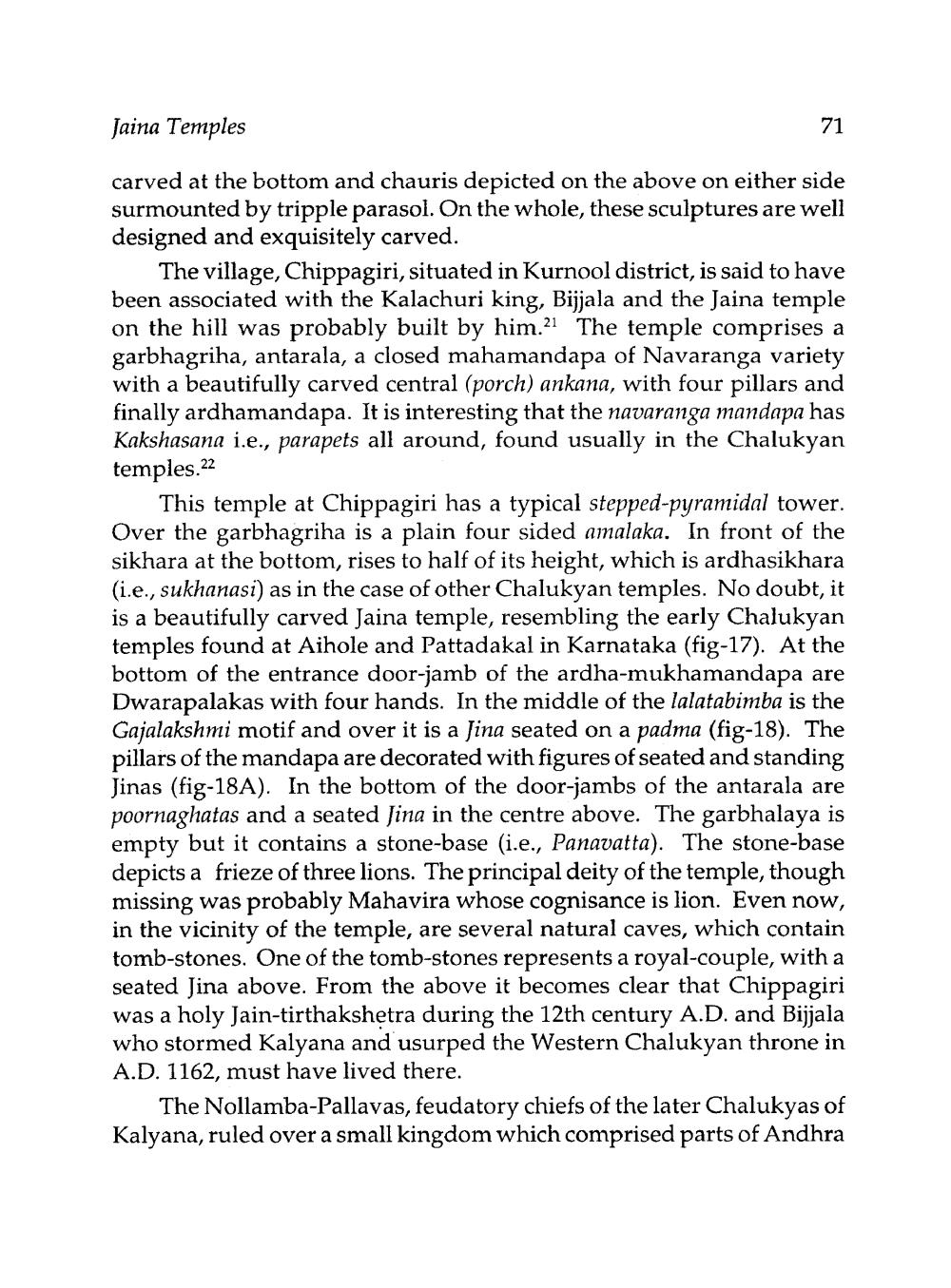________________
Jaina Temples
carved at the bottom and chauris depicted on the above on either side surmounted by tripple parasol. On the whole, these sculptures are well designed and exquisitely carved.
The village, Chippagiri, situated in Kurnool district, is said to have been associated with the Kalachuri king, Bijjala and the Jaina temple on the hill was probably built by him.21 The temple comprises a garbhagriha, antarala, a closed mahamandapa of Navaranga variety with a beautifully carved central (porch) ankana, with four pillars and finally ardhamandapa. It is interesting that the navaranga mandapa has Kakshasana i.e., parapets all around, found usually in the Chalukyan temples.22
This temple at Chippagiri has a typical stepped-pyramidal tower. Over the garbhagriha is a plain four sided amalaka. In front of the sikhara at the bottom, rises to half of its height, which is ardhasikhara (i.e., sukhanasi) as in the case of other Chalukyan temples. No doubt, it is a beautifully carved Jaina temple, resembling the early Chalukyan temples found at Aihole and Pattadakal in Karnataka (fig-17). At the bottom of the entrance door-jamb of the ardha-mukhamandapa are Dwarapalakas with four hands. In the middle of the lalatabimba is the Gajalakshmi motif and over it is a Jina seated on a padma (fig-18). The pillars of the mandapa are decorated with figures of seated and standing Jinas (fig-18A). In the bottom of the door-jambs of the antarala are poornaghatas and a seated Jina in the centre above. The garbhalaya is empty but it contains a stone-base (i.e., Panavatta). The stone depicts a frieze of three lions. The principal deity of the temple, though missing was probably Mahavira whose cognisance is lion. Even now, in the vicinity of the temple, are several natural caves, which contain tomb-stones. One of the tomb-stones represents a royal-couple, with a seated Jina above. From the above it becomes clear that Chippagiri was a holy Jain-tirthakshetra during the 12th century A.D. and Bijjala who stormed Kalyana and usurped the Western Chalukyan throne in A.D. 1162, must have lived there.
The Nollamba-Pallavas, feudatory chiefs of the later Chalukyas of Kalyana, ruled over a small kingdom which comprised parts of Andhra




